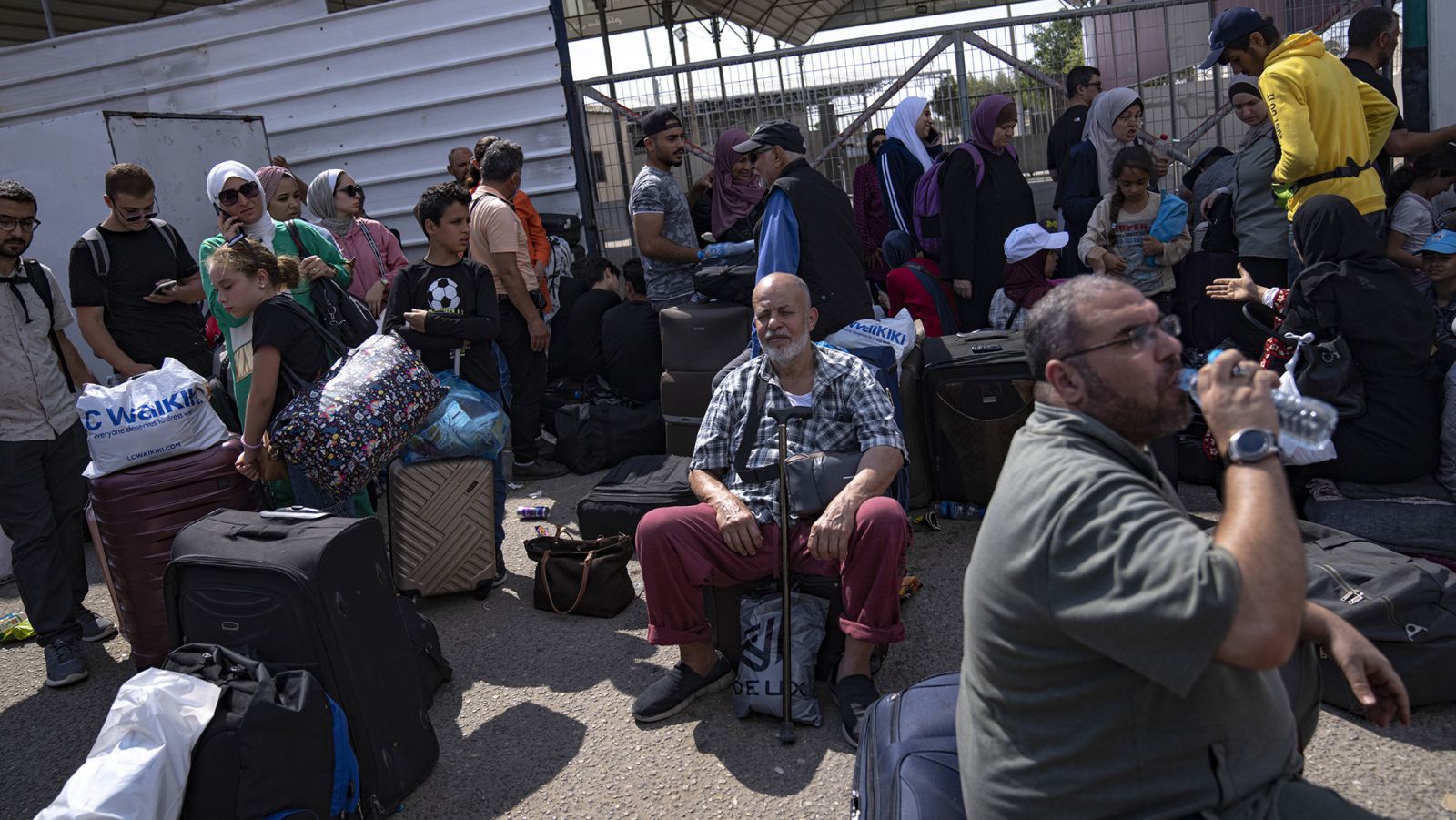Hundreds of thousands of Palestinians have flocked to southern Gaza as a potential Israeli ground operation appears imminent. Yet, the blockade imposed by Israel on the coastal enclave has left the residents with nowhere to go. The attack on October 7 that claimed the lives of 1,400 people prompted Israel to declare war on Hamas, its ruling party. As a result, Israel has severed supplies of water, electricity, food, and fuel, leaving the 2 million residents of Gaza in a state of helplessness.
With no other options available, many Palestinians have made their way to the border crossing with Egypt in the hope of escaping the bombardment. Unfortunately, the Rafah crossing is closed, leaving the situation uncertain for those seeking refuge. Efforts have been made by the United States to establish a humanitarian corridor, allowing civilians in Gaza and foreigners to seek safety in Egypt. However, Egypt has expressed reluctance in opening its borders, instead calling for Israel to allow aid to be delivered to Gazans. Egypt has demanded assurances from Israel that aid convoys will not be bombed.
Tensions have increased around the Rafah crossing since the start of the war, with multiple airstrikes reported in the area. Israel Defense Forces (IDF) spokesperson Lt. Col. Richard Hecht stated that they would “deal with” any Hamas targets they identified. Meanwhile, dozens of trucks are waiting to enter Gaza from the Egyptian side of the crossing. However, Egypt and Israel have denied any agreements regarding the opening of the crossing.
The Rafah crossing holds great significance as it is the only border crossing between Gaza and Egypt. Since Israel’s withdrawal from Gaza in 2005, it has become the sole entry point for Gazans to access the outside world. Before the conflict began, the border was open for an average of 27,000 people per month. However, political and security situations often dictate the closures.
The opening of the Rafah crossing has seen significant changes over time. After the 1982 peace treaty between Israel and Egypt, the crossing was controlled by Israel until its withdrawal from Gaza in 2005. Following Hamas’ takeover in 2007, restrictions on the movement of goods and people were tightened by Egypt and Israel. The crossing’s control then shifted to the European Union until fighters blew up nearby fortifications in 2008, causing thousands of Gazans to enter Egypt. Since then, the Rafah crossing has been subject to high levels of control, resulting in limited access and lengthy bureaucratic processes.
On normal days, movement through Rafah is extremely restricted, with only Gazans holding permits and foreign citizens able to use it. However, the process can be arduous, with travelers waiting for hours and encountering mistreatment. Gazans require exit permits from Hamas and entry permits from Egypt, with the overall process taking anywhere from 30 days to three months.
Egypt’s hesitance to open the crossing stems from concerns about the potential influx of Palestinian refugees into their territory. With millions of migrants already present in Egypt, President Abdel Fattah el-Sisi expressed the need for peace and security without incurring significant costs. Additionally, the displacement of Gazans from their homes and the prospect of turning them into refugees once again has sparked anger among many. Egypt has called on Israel to allow humanitarian aid through Rafah but has yet to establish a safe corridor within its territory for civilians, despite pleas from the United States.
